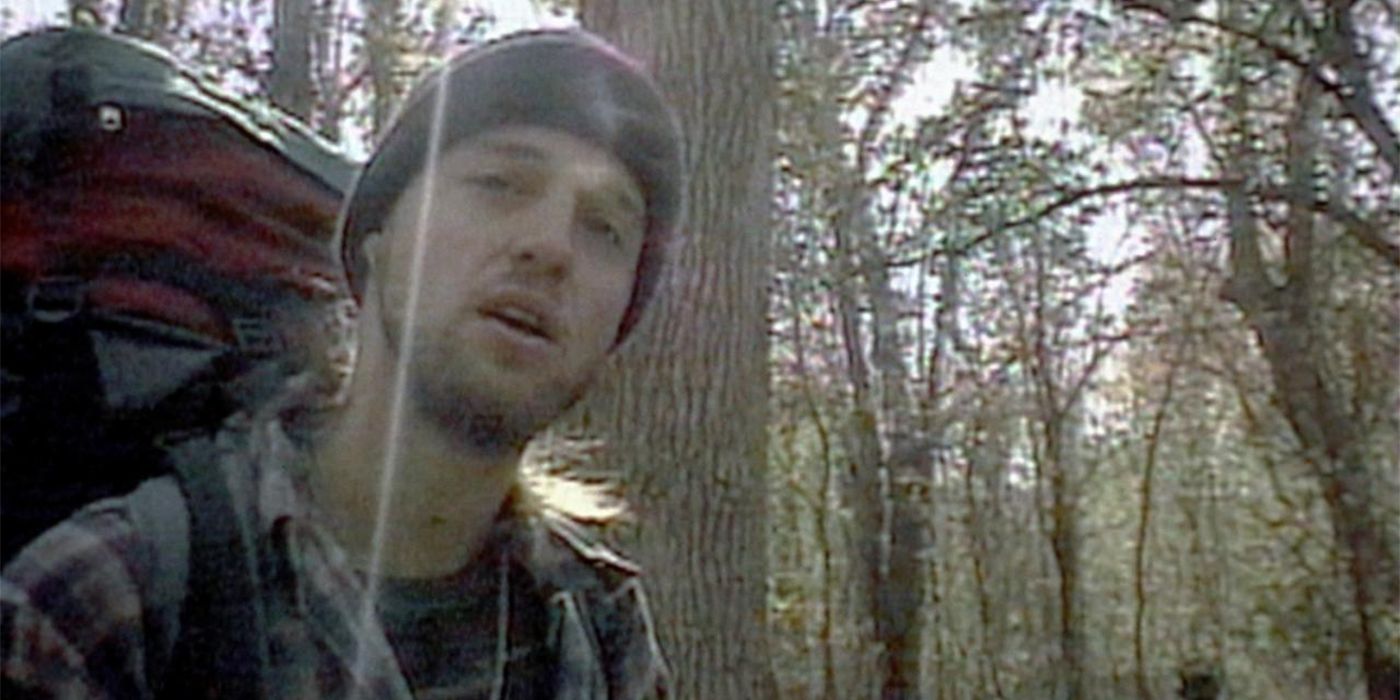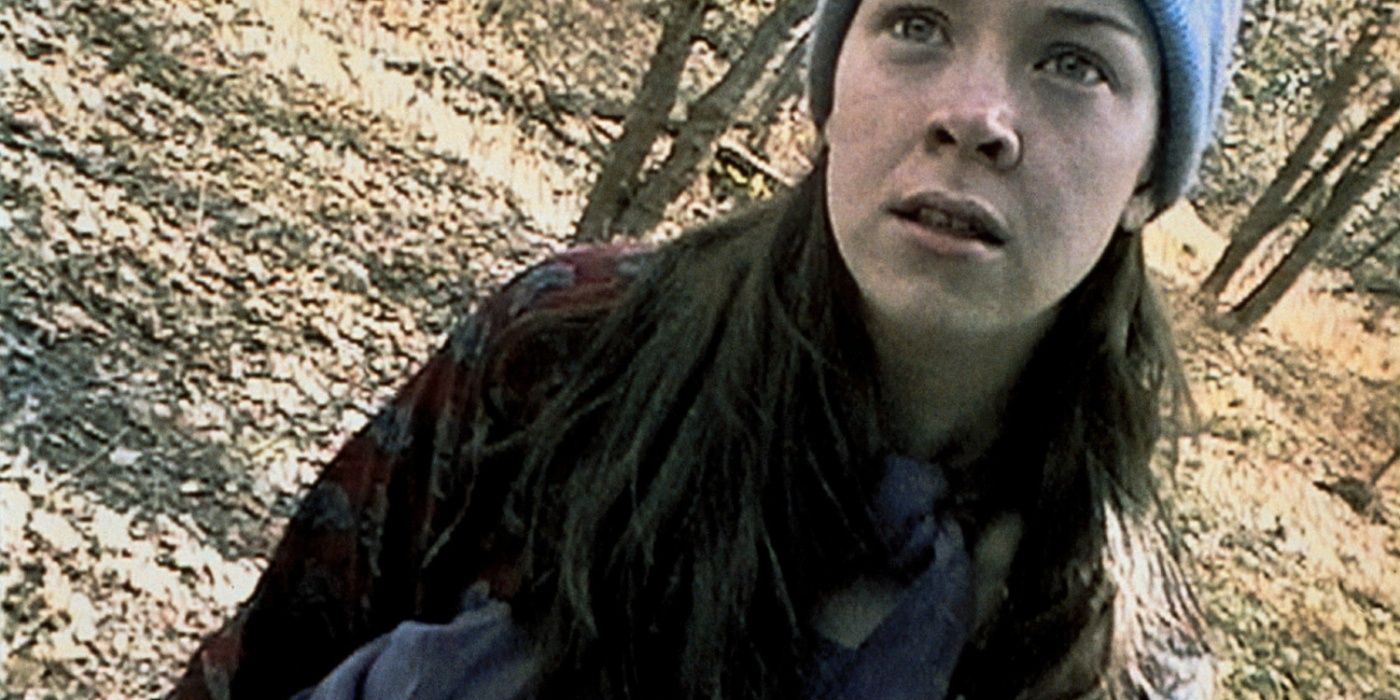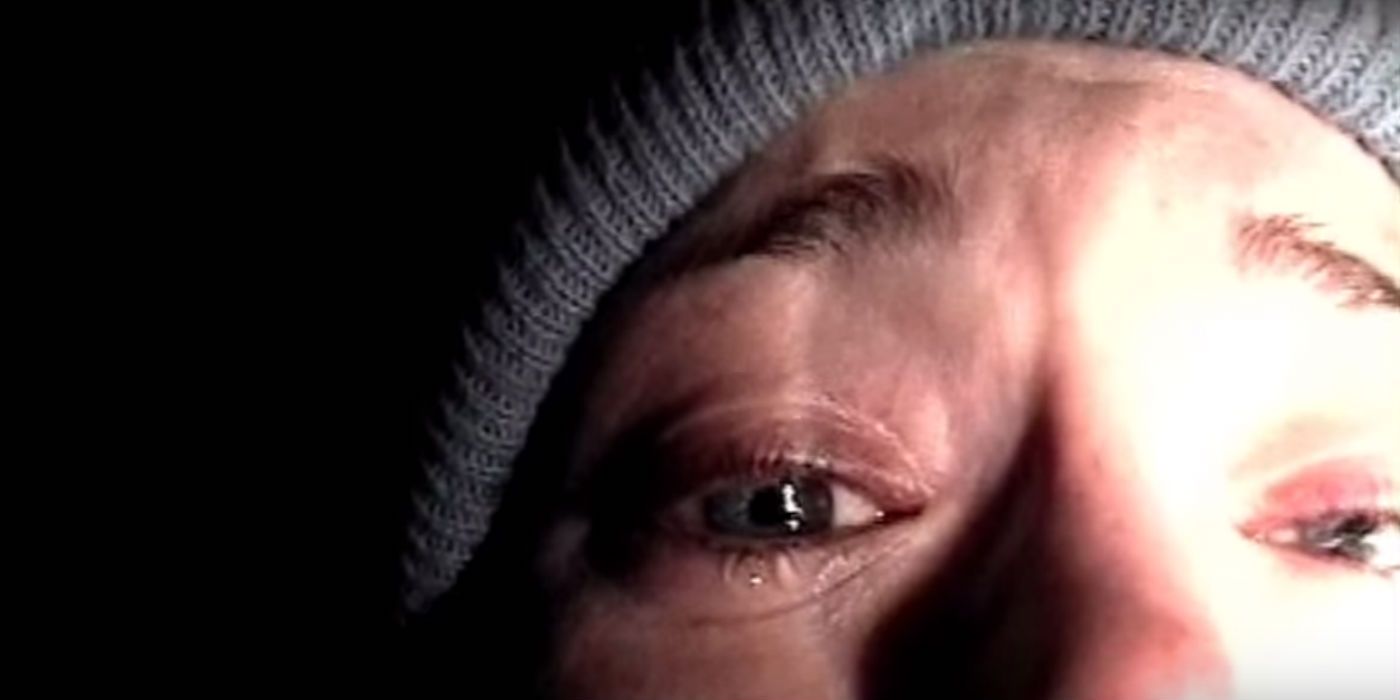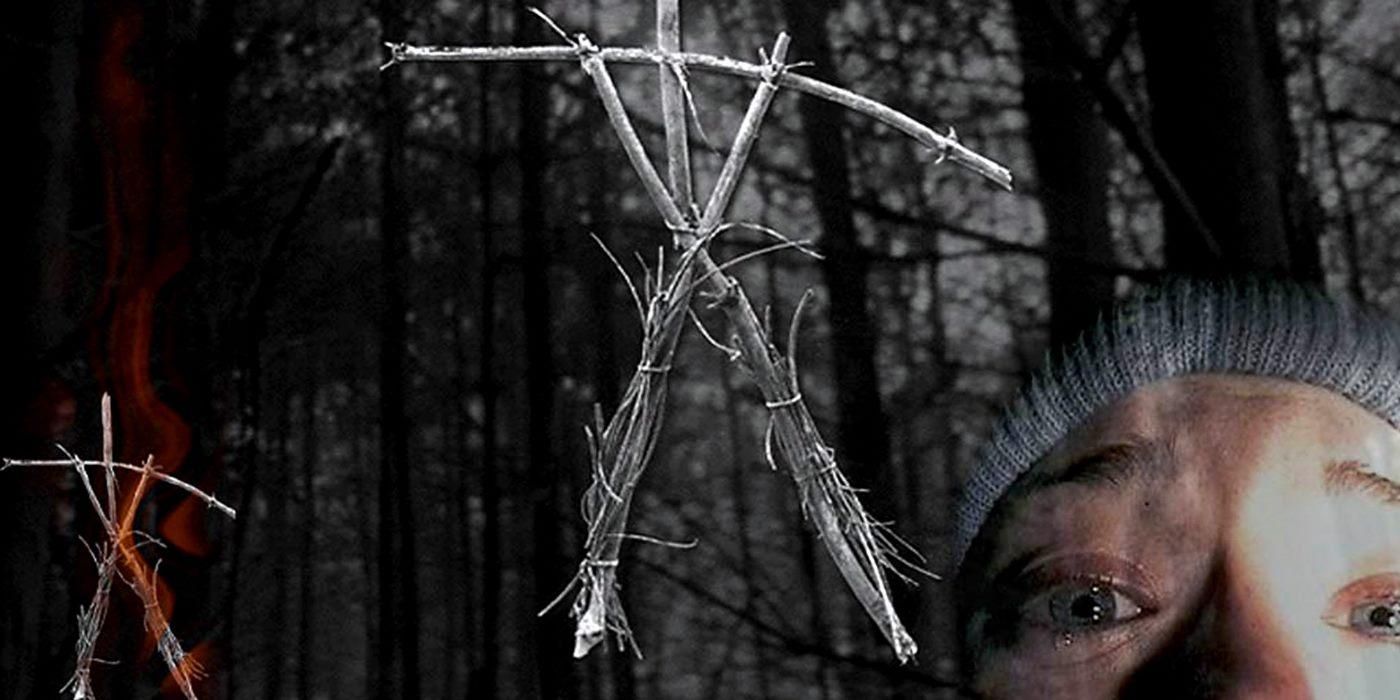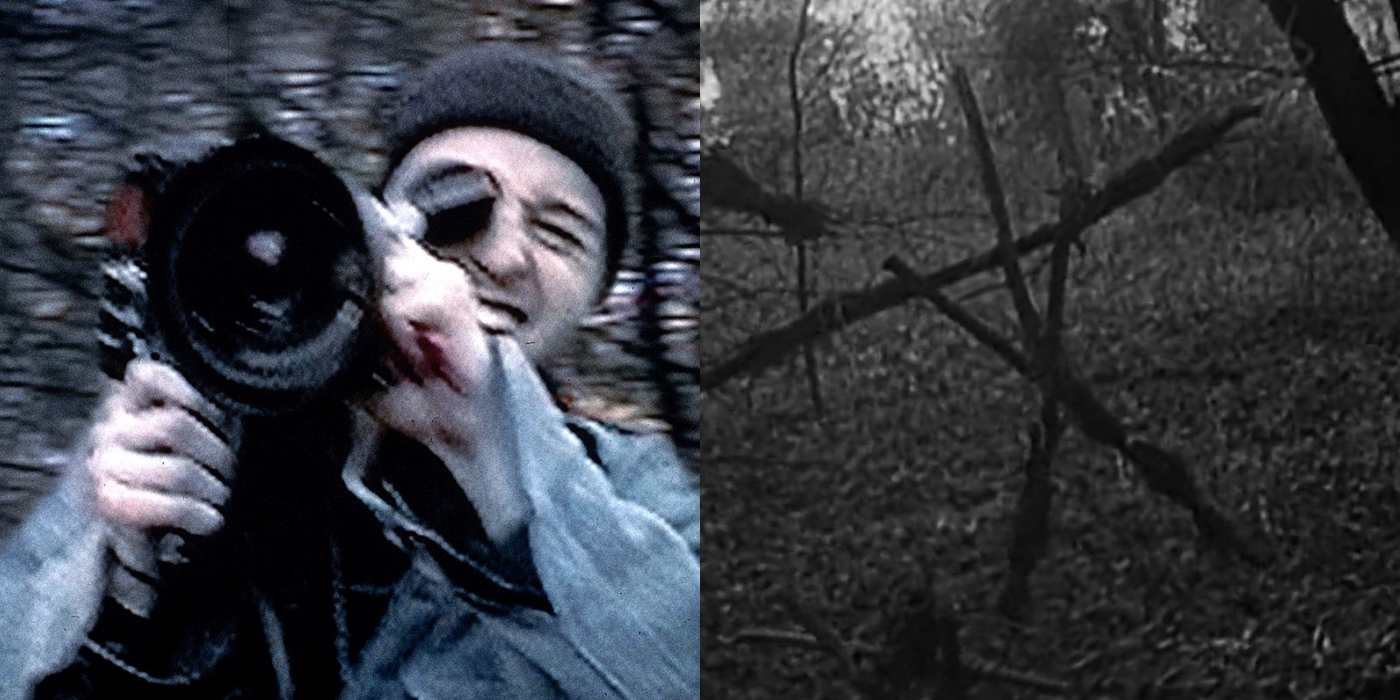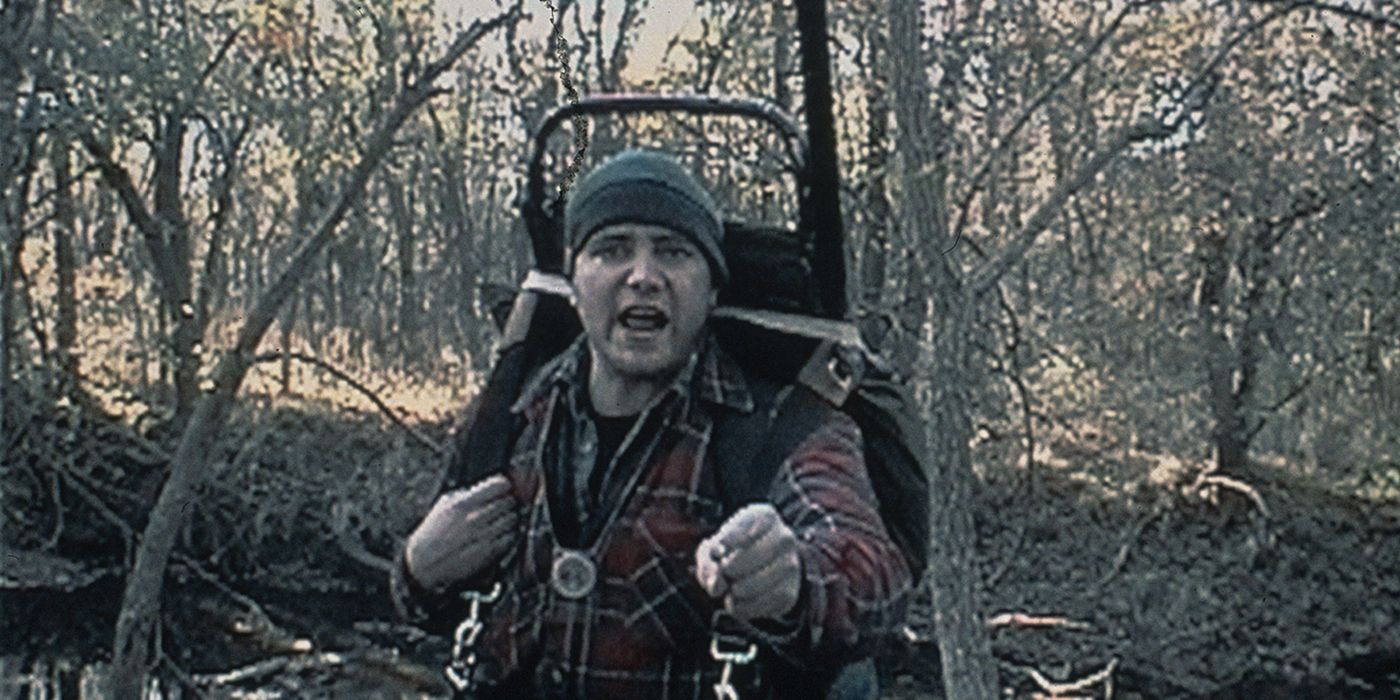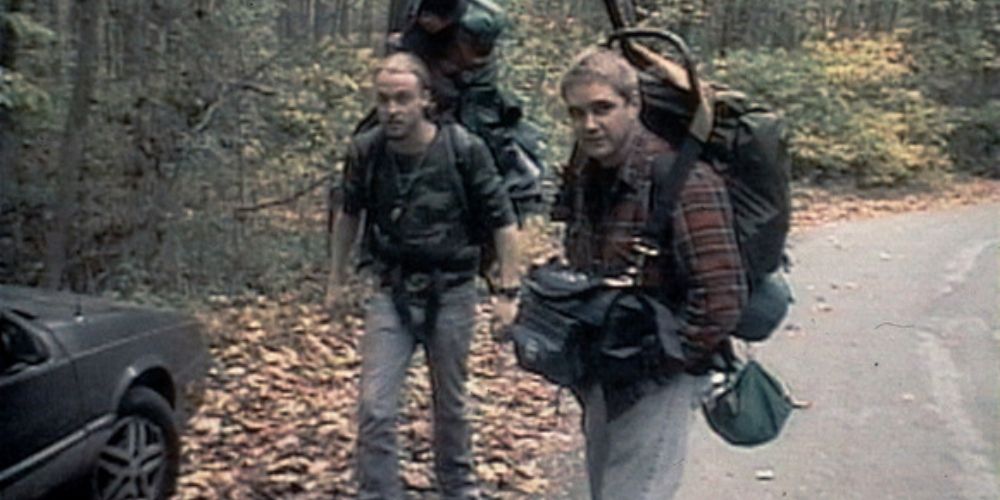Summary
- The Blair Witch Project ending left the fate of the trio ambiguous, sparking decades of debate and speculation about what happened to them.
- The Blair Witch monster is based on local folklore and legends, adding depth and backstory to the film. The origins of the Blair Witch are rooted in a dark history involving accusations, disappearances, and murders.
- The ambiguous ending of The Blair Witch Project set a new standard for found-footage horror, captivating audiences and solidifying the film's legacy.
The Blair Witch Project ending caps off the haunting found-footage movie on a suitable ambiguous and chilling note, but it leaves many questions about what exactly happened. 1999's The Blair Witch Project series was a low-budget independent horror film from co-directors Daniel Myrick and Eduardo Sanchez. The found-footage horror follows three student filmmakers who wander the woods of Burkittsville, Maryland, to investigate the legend of the Blair Witch. In the forests around where the village of Blair once stood, they encounter the Blair Witch — although the movie's Blair Witch monster is never shown in full before the movie ends.
After The Blair Witch Project ending, the trio is never seen again, but a year following their disappearance, the footage they shot is recovered. It's this "real" footage that the movie is made from, and this approach helped spawn further found-footage horrors like Paranormal Activity, Quarantine, and Cloverfield. However, despite the scares being brilliantly executed throughout the movie, the Blair Witch ending left the trio's fate ambiguous. What happens at the end of the Blair Witch project has been debated for decades, but the final scenes leave more clues than many realize on their initial viewing.
How The Blair Witch Project Ends
Were Mike And Heather Killed By The Blair Witch Monster?
For much of its runtime, The Blair Witch Project follows the students investigating the legend of the Blair Witch, including their interviews with locals about the various myths that have cropped up around her. One interviewee even claims to have seen the Blair Witch, describing her as a half-human, half-animal creature. The group then hikes into the woods near Burkittsville and soon loses their way.
This is when the horror of The Blair Witch Project and the buildup to its shocking ending truly begin. The group hears strange noises in the Burkittsville woods at night, and finds effigies presumably made for or by the Blair Witch of men made from sticks suspended from trees. The nerves of the group fray as the days pass and Josh (Joshua Leonard) eventually goes missing. His screams are later heard coming from the woods, with Heather (Rei Hance) finding some bloodied rags seemingly filled with his remains.
The Blair Witch Project ending finds Heather and Mike (Michael C. Williams) coming across what appears to be Rustin Parr’s abandoned house, which should be impossible since it was burned down following his execution in 1941. The duo enters the house after hearing more of Josh’s screams only to find strange symbols and hand prints on the wall. Mike is attacked by something off-camera, leading to Heather picking it up and heading into the basement.
There in the basement, she sees Mike facing the corner, just like Kyle Brody when Parr killed the children. Before she can react, however, Heather screams as she’s attacked by something. She drops the camera and the movie cuts to the credits, leaving lots of open questions about what happened to Heather and Mike at the end of The Blair Witch Project.
The Legend Of The Blair Witch Explained
What Is The Blair Witch Monster?
The Blair Witch Project changed movie marketing with its use of the Internet, and the film was virally touted as a 100% real found-footage documentary. While the Blair Witch monster is total fiction, it's based on several local and folklore legends from across the U.S. that helped Myrick and Sanchez craft an in-depth backstory for the titular witch and the village of Blair itself.
While the original found-footage movie is light on the details, there is a backstory for the monster that ends up killing the group of filmmakers before the ending of The Blair Witch Project. The story goes that in 1785 in Blair, Maryland, a group of children accuses a woman named Elly Kedward of taking them to her home and drawing blood from them. The enraged town quickly finds her guilty, and she's banished outside the village into a harsh winter to die of exposure.
By the next year, all of Kedward’s accusers and some of the village’s children vanish, leading to Blair being abandoned. A new township settles on the site decades later, but over the years strange occurrences happen, like children disappearing and the ritualistic murder of a search party in 1886. In 1940, a hermit named Rustin Parr turns himself in to the authorities and confesses to the murder of seven children, claiming a cloaked ghost woman made him do it. Kyle Brody was the only survivor, with Parr making the boy stand in a corner while he committed the killings.
Parr was hanged for his crimes and the legend of the Blair Witch faded into obscurity until a trio of college students — Heather Donahue, Joshua Leonard, and Michael Williams — went missing while filming a documentary on the topic. The origin of the Blair Witch, Parr's crimes, and the disappearance of Heather, Joshua, and Michael were all retconned to be fiction within the movie's universe by the bizarre Blair Witch sequel Book of Shadows: Blair Witch 2, although that's now largely ignored and isn't considered canon.
What Was The Bloody Thing In The Blair Witch Project?
Did Heather Find Josh's Remains?
One of the most terrifying scenes in The Blair Witch Project ending is when Josh goes missing and Heather makes a horrific discovery not long after. It's not made explicit what exactly this bloody thing wrapped in a piece of Josh's shirt is onscreen. The consensus is that the shirt contains fragments of Josh's teeth and hair, and perhaps other body parts. Since he's never seen again, and his screams were heard during the night, it seems clear the Blair Witch — or an agent working on her behalf (like a Blair Witch killer cult according to some theories) — took him and murdered him in a rather brutal fashion.
What Really Happened In The Blair Witch Project’s Ending?
Every Theory About The Ending Of The Blair Witch Movie Explained
The Blair Witch Project ending was one of several finale ideas Daniel Myrick and Eduardo Sanchez had, and they chose the option that would keep the mystery alive by not revealing the witch, or even if the monster was real. There are a number of theories about the real killer in The Blair Witch Project, but the most commonly accepted is that the Blair Witch lured Heather and Mike to the house and killed them. The movie shows the group getting lost and traveling in circles, and one theory suggests they’re caught in a time loop created by the witch, which explains how Parr’s house could still be standing.
If they are caught in a time warp, it’s also possible Rustin Parr himself is the killer. Blair Witch, the 2016 sequel, backs up the time travel theories, with Heather’s brother James heading into the same woods to get closure on her disappearance, and his group soon getting caught in a loop that ends in Rustin Parr’s house. Other common theories on what happened at the end of The Blair Witch Project put forward that the Burkittsville locals are the ones responsible for the killings (possibly leaving the Blair Witch stick figures as effigies or totems of worship), or that the witch possessed Josh, and he’s the unseen attacker.
The 2000 video game Blair Witch Volume I: Rustin Parr takes place in 1941, with the main character coming across Parr’s home and having a flash-forward vision of Heather and Mike in the basement — an event that doesn’t occur for another 50 years. Heather is attacked by an unseen force, and the game (whose canon status in the Blair Witch mythology is now debatable) suggests an ancient Native American force dubbed Hecaitomix inhabits the woods and is responsible for creating the Blair Witch.
The Blair Witch Project Ending Helped It Become A Cult Classic
Why The Ambiguity Secured The Movie's Legacy
The original Blair Witch Project’s innovative marketing campaign in 1999 involved making it seem like the group’s found footage was totally real, with the movie launching a website providing reams of backstory on the town and the witch herself. The film’s main actors also had to keep a low profile to maintain the illusion they were actually missing. This led to the movie grossing close to $250 million worldwide on a mere $60,000 budget ($200,000 after post-production thanks to late studio backing), making it one of the most profitable films in history.
While The Blair Witch Project wasn’t the first so-called found footage movie — 1980's controversial horror movie Cannibal Holocaust is often regarded as the originator — it certainly popularized the genre, paving the way for movies like Paranormal Activity and Cloverfield. It thrust the idea of found footage horror from a niche subgenre into the mainstream, proving its value beyond borderline unpalatable shock-thrills like Cannibal Holocaust.
While The Blair Which Project launched a franchise that included two sequels, a few video games, and lots of novels, the original is still highly regarded for its taut, psychological chills. The Blair Witch Project ending is still hotly debated to this day, with the terrifying final shot sticking with viewers two decades later and creating a continued discussion that ensures the movie has never strayed too far from relevancy.
How Blair Witch's Ending Saved The Found Footage Horror Subgenre
The Mystery Of The Blair Witch Ushered In A New Era After Cannibal Holocaust And The Faces Of Death
Fiction masquerading as fact has always been a staple of horror, even before movies — everything from campfire stories at summer camp to the letter correspondence format of Mary Shelley's 1818 classic Frankenstein relied on convincing the listener/reader that the horrifying events conveyed are real. As a medium, cinema struggled to recreate this magic. No amount of suspension of disbelief could convince an audience that a scripted, edited movie with a cast of actors in character was real on an emotional level.
The found footage format was used to attempt this with movies like Cannibal Holocaust and equally controversial The Faces of Death, but the conceit was always "how close to a snuff film can we get without actually making a snuff film", relying on visceral disgust more than creating fear from psychological realism. Then, The Blair Witch Project came along and changed everything. It was the first found-footage movie pertaining to the supernatural that genuinely had audiences questioning its status as fiction. By now, the legendary status of The Blair Witch Project is undebatable, but the movie wouldn't have reached it without the ending.
The final shots of The Blair Witch Project left 1990s audiences leaving theaters with a genuine sense of unease. The ambiguity was pulled off with such aplomb that horror aficionados, none of whom were numb to the found footage genre's real-but-not tricks and tropes, legitimately questioned whether the whole release wasn't actually just part of the Blair Witch monster's curse – one to which they'd now succumbed just by watching it. This was, of course, hysteria, hype, and a bit of fun in the times when water-cooler conversations drove public interest before memes and hashtags, but it's a testament to just how successfully The Blair Witch Project's ending achieved its objectives.
The narrative device of an ambiguous found footage ending has been harnessed by everything from Paranormal Activity to Cloverfield to [REC] to the underrated The Houses October Built, but it was The Blair Witch Project that first mastered the trick of making viewers feel like watching the movie was the first act in their own personal horror story. No found footage movie has managed to recreate the success or impact of The Blair Witch Project, and that's because the entire subgenre basically only exists because of the 1999 release.
Are The Blair Witch Project Sequels Or Remake Any Good?
The Ambiguous Blair Witch Ending Doesn't Need Following Up, But The Option To Is There
While The Blair Witch Project's ending laid the foundations for stories outside but related to the original found footage, none of the sequels actually match up to the original. In The Woods/Blair Witch, the time travel twist and horrible CGI monster —which may or may not have been the titular witch — were somewhat compelling, but ultimately underwhelming.
It's worth noting that the sequels and 2016 remake had incredibly big shoes to fill though, as it's difficult to match the original since The Blair Witch Project's impact on '90s and '00s horror is unquestionable. The Blair Witch sequels aren't a must-watch by any stretch, but are still interesting for those who want to explore the lore beyond the original 1999 movie.
Why The Blair Witch Project Will Never Be Topped
The 1999 Found Footage Phenomenon Was A Moment As Much As A Movie
The Blair Witch Project ending had people talking when they left the theater, but that wasn't what made this horror movie a sensation. Instead, the entire success of Blair Witch rested on its marketing. The problem is that it will never work today as it did in 1999. Audiences in the 1990s somehow believed that this was a true story, and it freaked a lot of viewers out, especially those who lived in areas of the country that resemble the wooded areas from the movie. It is also understandable that the found footage horror movies were still fresh and new at the time.
However, as both the sequels to The Blair Witch Project and the countless found footage movies that followed learned, this movie caught lightning in a bottle. It hit at a time when found footage was mostly an unknown film genre. Today, with the Internet so much bigger than it was in 1999, people can go online and figure out pretty quickly when something is real and when it is fake.
There have also been many found-footage movies pretending to be real in the years since The Blair Witch Project took the world by storm. The fact that found footage is now a well-known horror subgenre means there is little chance any viewers will have their disbelief suspended as effectively as The Blair Witch Project managed again. While there is a chance social media manipulation could help another movie gain similar notoriety in the future, for now, the Blair Witch Project ending and its dominance of water-cooler conversations likely won't be matched for a long time.
The Blair Witch Project's Abrupt Ending Works With Its Budget
The Low-Cost Ending Was The Best Choice For The Blair Witch Project
The Blair Witch Project's abrupt ending impacted audiences so heavily that it's still being discussed over two decades later. That is especially impressive considering the movie's incredibly small budget of $200-$750,000 (via THR) left few options for how to resolve the story. The low-budget horror movie effectively kept costs down with a small cast, simple setting, and an amateurish look that fit the story. This cost-cutting also worked well for the ending, as The Blair Witch Project budget didn't allow for a big effects-heavy showdown with a horror monster, meaning Daniel Myrick and Eduardo Sanchez had to get inventive.
The tight budget meant The Blair Witch Project ending couldn't include a confrontation with the evil spirit, since it was impossible to create a memorable movie monster at a reasonable cost. The challenge then became how to deliver a memorable and worthwhile ending without showing anything substantial. Though there were alternate endings for The Blair Witch Project that were reshot with studio funding, none were as effective as Josh standing facing the corner of the room. The necessity of the modest production forced one of the most memorable horror movie endings of all time, and while it's also among the most ambiguous the lack of clarity has clearly worked in its favor.
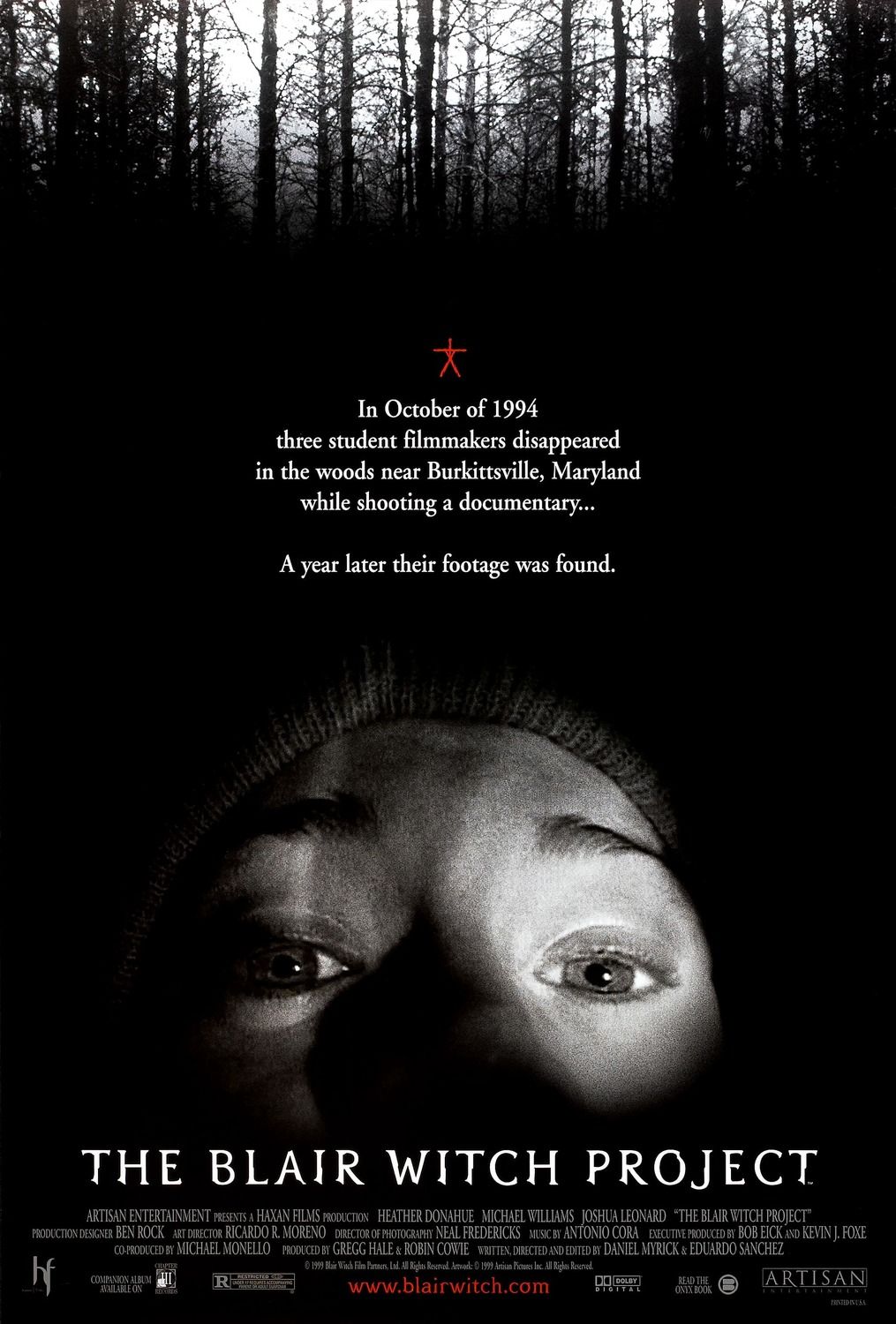
The Blair Witch Project
- Release Date
- July 30, 1999
- Director
- Eduardo Sánchez , Daniel Myrick
- Cast
- Joshua Leonard , Michael C. Williams , Heather Donahue
- Runtime
- 81 minutes
- Writers
- Daniel Myrick , Eduardo Sánchez
- Studio(s)
- Summit Entertainment


